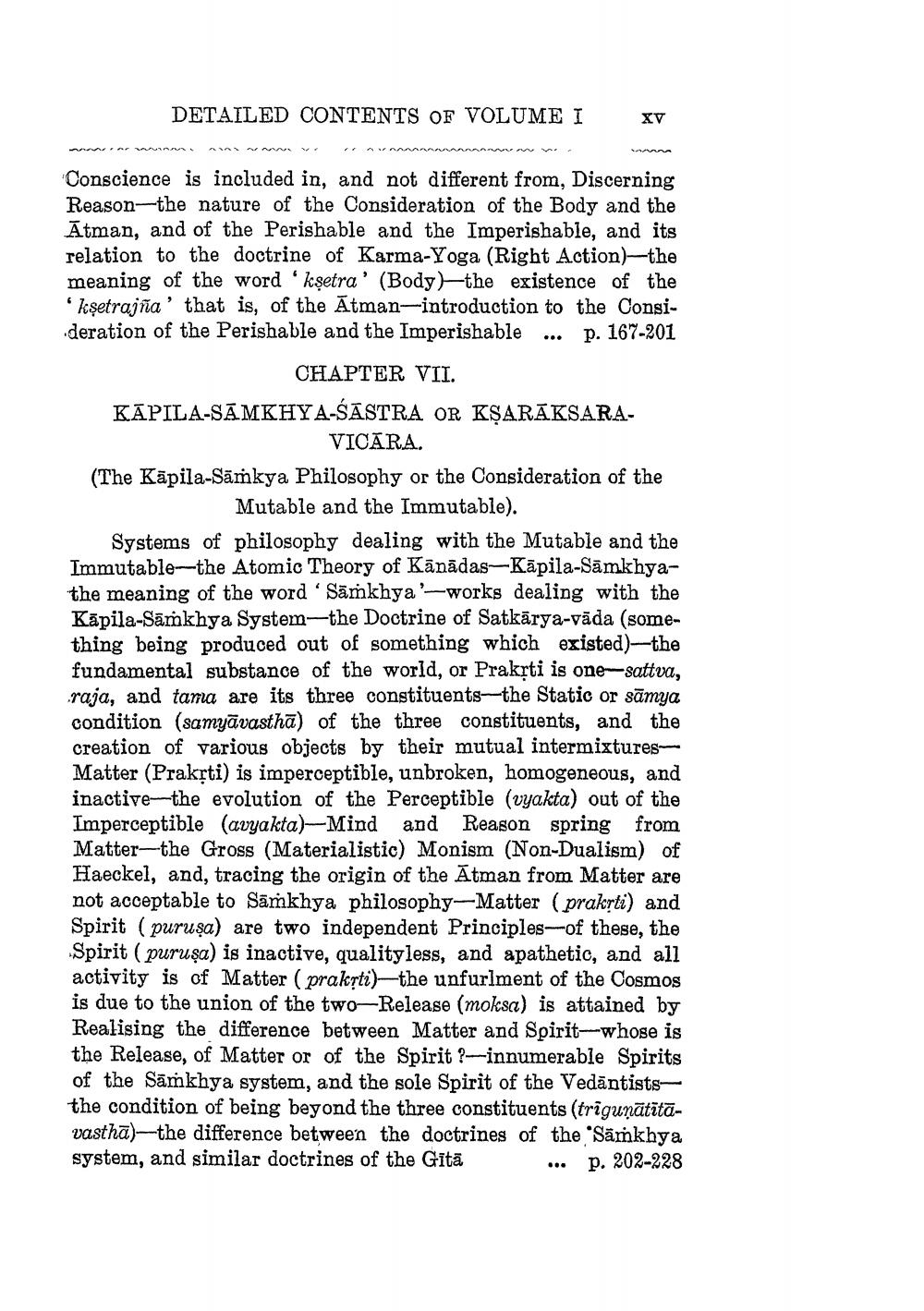________________
DETAILED CONTENTS OF VOLUME I
XV
Conscience is included in, and not different from, Discerning Reason-the nature of the Consideration of the Body and the Ātman, and of the Perishable and the Imperishable, and its relation to the doctrine of Karma-Yoga (Right Action)-the meaning of the word 'kşetra' (Body) the existence of the
kşetrajña' that is, of the Ātman-introduction to the Consideration of the Perishable and the Imperishable ... p. 167-201
CHAPTER VII. KAPILA-SĀMKHYA-ŚĀSTRA OR KŞARĀKSARA
VICARA. (The Kāpila-Sāmkya Philosophy or the Consideration of the
Mutable and the Immutable). Systems of philosophy dealing with the Mutable and the Immutable--the Atomic Theory of Kānādas-Kāpila-Sāmkhyathe meaning of the word 'Sāṁkhya'-works dealing with the Kāpila-Samkhya System—the Doctrine of Satkārya-vāda (something being produced out of something which existed)-the fundamental substance of the world, or Prakrti is onesattva, raja, and tama are its three constituents--the Static or sāmya condition (samyāvasthā) of the three constituents, and the creation of various objects by their mutual intermixtures Matter (Prakrti) is imperceptible, unbroken, homogeneous, and inactive-the evolution of the Perceptible (vyakta) out of the Imperceptible (avyakta)-Mind and Reason spring from Matter-the Gross (Materialistic) Monism (Non-Dualism) of Haeckel, and, tracing the origin of the Ātman from Matter are not acceptable to Sāṁkhya philosophy-Matter (prakrti) and Spirit (puruşa) are two independent Principles--of these, the Spirit (puruşa) is inactive, qualityless, and apathetic, and all activity is of Matter (praksti)—the unfurlment of the Cosmos is due to the union of the two-Release (moksa) is attained by Realising the difference between Matter and Spirit-whose is the Release, of Matter or of the Spirit ?- innumerable Spirits of the Sāmkhya system, and the sole Spirit of the Vedāntists the condition of being beyond the three constituents (trigunātītāvasthā)-the difference between the doctrines of the "Särkhya system, and similar doctrines of the Gitā
... p. 202-228




